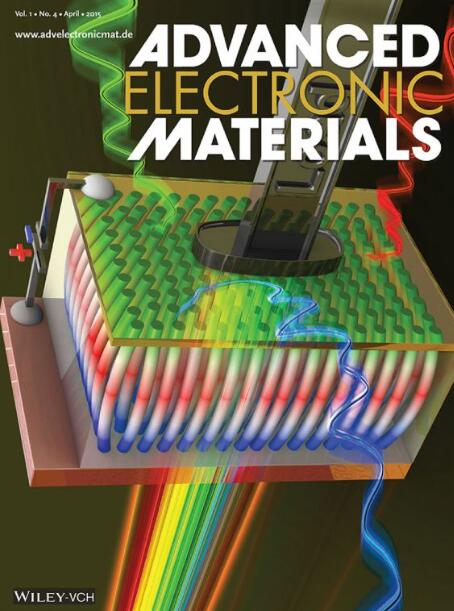A Single-Stage Differential Amplifier Using Organic Electrochemical Transistors
IF 5.3
2区 材料科学
Q2 MATERIALS SCIENCE, MULTIDISCIPLINARY
引用次数: 0
Abstract
Organic electrochemical transistors (OECTs) are attractive devices, particularly for biomedical applications. The inherent quality of OECTs in amplifying signals, combined with the possibility of directly interfacing with biological tissue, make them unique candidates to replace recording electrodes with the added advantage of providing on-site amplification (and thus allowing them to be counted as active electrodes). While most amplifiers using OECTs are transconductance amplifiers, having voltage-to-voltage amplification is more desirable in many applications to make the output compatible with any downstream conditioning circuit. Differential recording of physiological signals has the benefit of rejecting the common-mode noise sourcing from the environment or the body itself while amplifying the desired signal. Here the considerations for and challenges of designing an OECT-based differential amplifier are discussed and a three-transistor amplifier is proposed that can provide a common-mode rejection ratio of up to ≈20 dB. To demonstrate its advantage, a differential amplifier is used to record ECG signals from a human volunteer, and the collected data is compared with recordings from a Wheatstone bridge OECT amplifier, showing the improved signal-to-noise ratio, gain, and power consumption.

一种采用有机电化学晶体管的单级差分放大器
有机电化学晶体管(OECTs)是一种极具吸引力的设备,尤其适用于生物医学应用。有机电化学晶体管在放大信号方面的固有特性,以及与生物组织直接连接的可能性,使其成为替代记录电极的独特候选器件,并具有提供现场放大的额外优势(因此可被视为有源电极)。虽然大多数使用 OECTs 的放大器都是跨导放大器,但在许多应用中,电压到电压的放大更为理想,以便使输出与任何下游调节电路兼容。对生理信号进行差分记录的好处是,在放大所需信号的同时,还能抑制来自环境或人体本身的共模噪声。这里讨论了设计基于 OECT 的差分放大器的注意事项和挑战,并提出了一种三晶体管放大器,其共模抑制比可达 ≈20 dB。为了证明其优势,使用差分放大器记录了一名人体志愿者的心电信号,并将收集到的数据与惠斯通电桥 OECT 放大器记录的数据进行了比较,结果显示信噪比、增益和功耗均有所改善。
本文章由计算机程序翻译,如有差异,请以英文原文为准。
求助全文
约1分钟内获得全文
求助全文
来源期刊

Advanced Electronic Materials
NANOSCIENCE & NANOTECHNOLOGYMATERIALS SCIE-MATERIALS SCIENCE, MULTIDISCIPLINARY
CiteScore
11.00
自引率
3.20%
发文量
433
期刊介绍:
Advanced Electronic Materials is an interdisciplinary forum for peer-reviewed, high-quality, high-impact research in the fields of materials science, physics, and engineering of electronic and magnetic materials. It includes research on physics and physical properties of electronic and magnetic materials, spintronics, electronics, device physics and engineering, micro- and nano-electromechanical systems, and organic electronics, in addition to fundamental research.
 求助内容:
求助内容: 应助结果提醒方式:
应助结果提醒方式:


